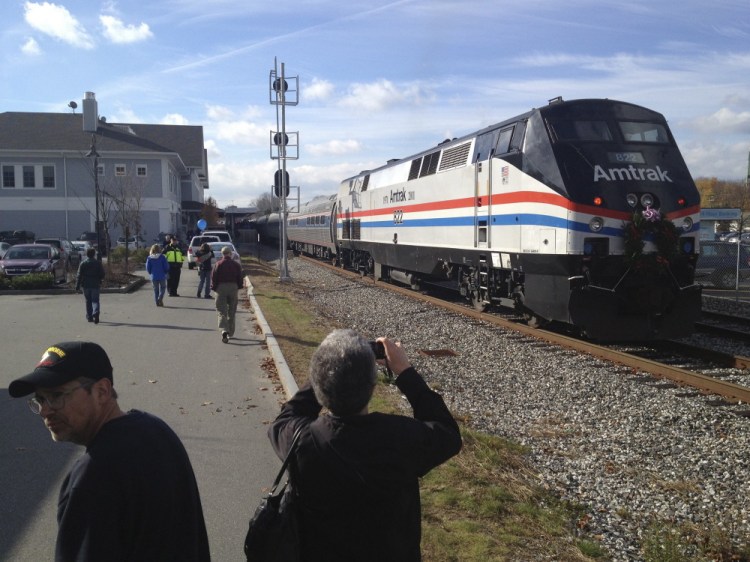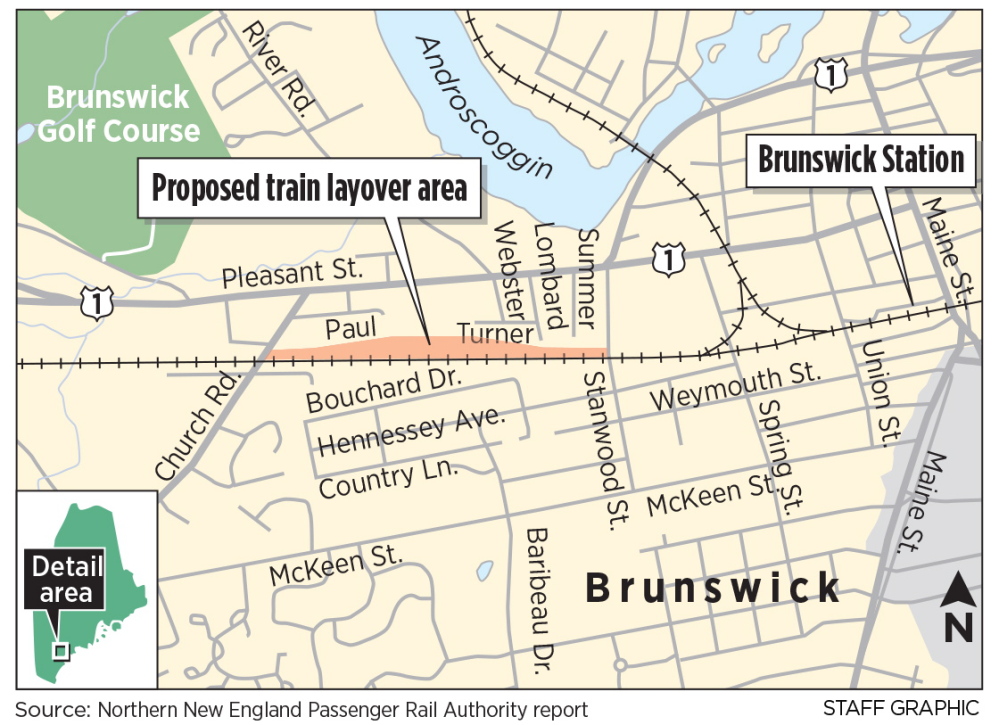State regulators have tentatively approved the last remaining permit needed for construction to start on a fiercely contested $12.7 million layover facility for Amtrak trains in Brunswick.
The Maine Department of Environmental Protection issued a draft memorandum Wednesday that outlined its decision and conditions for a storm water permit, the project’s final regulatory hurdle.
A final decision by the DEP, expected June 17, would clear the way for construction of a maintenance building that could cover an entire train. The train shed would be more than two football fields long and be built on the railroad right of way near a residential neighborhood between Stanwood Street and Church Road.
Officials with the rail authority that manages Amtrak’s Downeaster service are pleased with the decision and were reviewing the 22-page document and its long list of conditions. Opponents are both disappointed and angry.
Although some of the conditions are modest improvements – such as requirements for stringent spill prevention plans by subcontractors – the project is simply not suited for a site so close to residential neighborhoods, said Dan Sullivan, who lives nearby.
The changes are “eye candy,” he said, and won’t mitigate the fact that the building and accompanying train movements will “destroy the resale value of my home and the livability of my neighborhood.”
Nearby residents wanted the project moved elsewhere, not modified, said Bob Morrison, chairman of the Brunswick West Neighborhood Coalition, which led the fight against the project. Residents said the building and train activity would pollute groundwater, fill the air with diesel fumes and create too much noise.
“We are not interested in a better plan,” Morrison said. “We are interested in not having the construction of a maintenance layover facility in our backyard.”
If the DEP decision stands, he said, the group will consider appealing to the department’s board of directors, a seven-member citizen board whose members are appointed by the governor and confirmed by the Legislature. One of the board’s duties is to hear appeals of the agency’s licensing actions.
There has been intense opposition to the facility since it was first proposed in 2012 when the Downeaster service was extended from Portland to Brunswick. The building would be 655 feet long, 70 feet wide and 37 feet high.
Supporters said the project would allow trains to stay overnight in Brunswick rather than return to Portland empty at the end of a day’s run. Once the layover facility is built, the rail authority plans to increase the number of daily trips to Brunswick from two to three.
The Brunswick Town Council avoided taking a position on the project, but state politicians took sides. State Sen. Stan Gerzofsky, D-Brunswick, became an outspoken opponent of both the project and the rail authority, accusing the agency of using the federal power granted for rail projects to override local control and ignore the interest of residents. Last year, Gov. Paul LePage appointed a neighborhood opponent of the project to the rail authority board of directors.
In March, the DEP held a public hearing on the project, the first time such a hearing was necessary since the law that governs storm water permits went into effect in 1997.
Patricia Quinn, executive director of the Northern New England Passenger Rail Authority, praised the work of state regulators and said the input from residents and officials led to improvements.
“People can be assured that the project has gone though a very thorough review,” she said.
Wayne Davis, chairman of Trainriders/Northeast, a rail advocacy group, said the decision was a relief.
“We have been holding our breath,” he said.
Sullivan, a member of the Brunswick West Neighborhood Coalition, blames the Brunswick Town Council for failing to support the residents. “They totally left us out in the lurch,” he said.
But only two of the nine councilors opposed the project, said Kathy Wilson, an at-large council member who supported it.
Wilson said a vocal minority of 20 or 30 people opposed the project, while the rest of the town supported it by a margin of 10-1 – based on the phone calls and emails she received from constituents who believe it will help improve train service.
“I heard from a lot of people,” she said. “They like the train service, and in the long run it will bring economic benefits to the town and many businesses up on Maine Street.”
Send questions/comments to the editors.





Success. Please wait for the page to reload. If the page does not reload within 5 seconds, please refresh the page.
Enter your email and password to access comments.
Hi, to comment on stories you must . This profile is in addition to your subscription and website login.
Already have a commenting profile? .
Invalid username/password.
Please check your email to confirm and complete your registration.
Only subscribers are eligible to post comments. Please subscribe or login first for digital access. Here’s why.
Use the form below to reset your password. When you've submitted your account email, we will send an email with a reset code.